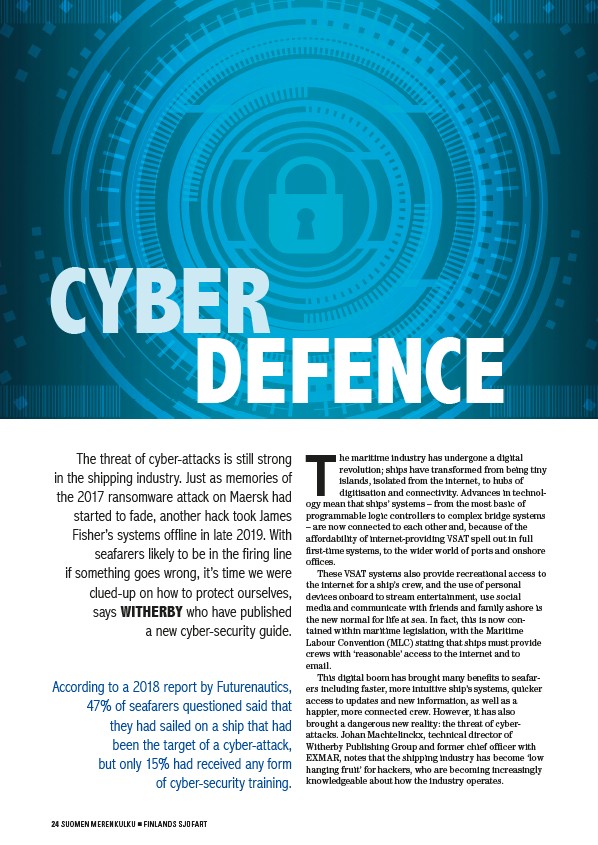
CYBER
DEFENCE
The threat of cyber-attacks is still strong
in the shipping industry. Just as memories of
the 2017 ransomware attack on Maersk had
started to fade, another hack took James
Fisher’s systems offline in late 2019. With
seafarers likely to be in the firing line
if something goes wrong, it’s time we were
clued-up on how to protect ourselves,
says WITHERBY who have published
a new cyber-security guide.
24 SUOMEN MERENKULKU J FINLANDS SJÖFART
The maritime industry has undergone a digital
revolution; ships have transformed from being tiny
islands, isolated from the internet, to hubs of
digitisation and connectivity. Advances in technology
mean that ships’ systems – from the most basic of
programmable logic controllers to complex bridge systems
– are now connected to each other and, because of the
affordability of internet-providing VSAT spell out in full
first-time systems, to the wider world of ports and onshore
offices.
These VSAT systems also provide recreational access to
the internet for a ship’s crew, and the use of personal
devices onboard to stream entertainment, use social
media and communicate with friends and family ashore is
the new normal for life at sea. In fact, this is now contained
within maritime legislation, with the Maritime
Labour Convention (MLC) stating that ships must provide
crews with ‘reasonable’ access to the internet and to
email.
This digital boom has brought many benefits to seafarers
including faster, more intuitive ship’s systems, quicker
access to updates and new information, as well as a
happier, more connected crew. However, it has also
brought a dangerous new reality: the threat of cyberattacks.
Johan Machtelinckx, technical director of
Witherby Publishing Group and former chief officer with
EXMAR, notes that the shipping industry has become ‘low
hanging fruit’ for hackers, who are becoming increasingly
knowledgeable about how the industry operates.
According to a 2018 report by Futurenautics,
47% of seafarers questioned said that
they had sailed on a ship that had
been the target of a cyber-attack,
but only 15% had received any form
of cyber-security training.